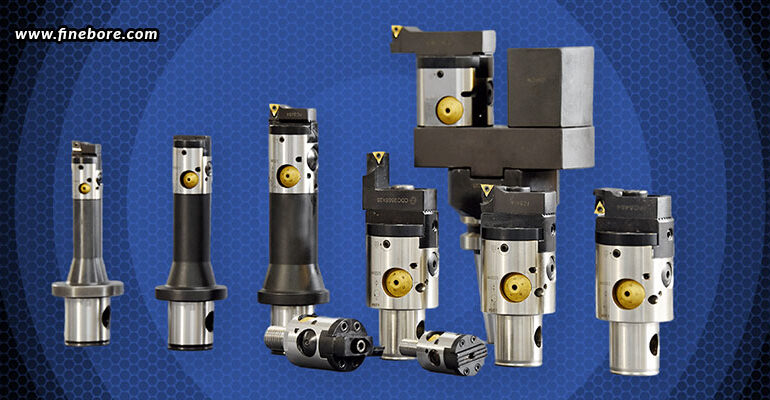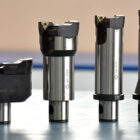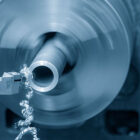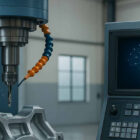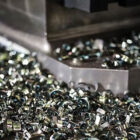There’s more than one way to create a hole , but boring is one of the best ways, which is a metal cutting process used to enlarge, refine, and increase the precision of an existing hole in a workpiece. The main goal of boring is to achieve accurate dimensions, surface finish, and alignment within the hole. Depending on the size, complexity, and level of accuracy necessary for the procedure, a lathe, a milling machine, or a specialized boring machine may be used for the procedure. Let’s now talk about a few common and tricky facts that everyone associated with the boring operation should know.
How should a hole be prepared before boring?
When castings and weldments are possible, rough and fine boring operations are best carried out after the workpiece has been machined to square the hole to the entry surface. When a hole has been chamfered and the rough or semi bore is clear of any chatter or deep scallops made by rough milling, fine boring tools should also be used to enter the hole.
When should roughing be considered, and when finish boring?
The hole diameter tolerance, material stock on tolerance, length to diameter ratio, cast parts, and surface finish are the five primary criteria to take into account when determining whether to employ a roughing or finishing procedure. Firstly, it is necessary to use a finishing head with precise adjustment if the diameter tolerance is less than about four thousandths of an inch. Finish boring heads are typically not intended to remove stock with a diameter more than 40 thousandths of an inch. A roughing head should be used to open up the hole if the initial one has more stock than this. Secondly, a rough boring head should be used to true up the hole before finishing when the length of the bore is longer, because the longer the hole, the greater the likelihood that it isn’t completely straight. A casting method often results in holes that are significantly undersized, curved ovular, and somewhat out of alignment. These holes should be prepared using a roughing head. And finally, a finish boring head is usually necessary for a bore with a tight surface finish.
How to be certain that the length of the boring tools is appropriate?
Diameter and gauge length are not the only factors to be considered for right-sized tooling. The reach required to reach the bore and its depth must also be taken into consideration. In other words, the setup for eight inches of reach should be planned if the hole is three inches deep, but the tool needs to reach five inches to get to the bore.
Can production be done using an extended range insert holder?
Shops frequently swap out the insert holders with internal parts from other applications. In small-batch situations, doing this can be a wise decision. However, attempting to increase production from the same arrangement would result in passable but not the most productive results. It is preferable to use an assembly with a bigger modular connection size and boring head. In addition to improving balance by moving the insert holder closer to the boring head, this will lower the length to diameter ratio.
How to keep chips under control while boring?
Cutting speed optimization is the first step here. High cutting speeds typically result in cutting conditions that keep the chip load constant. It is essential to find the chip load in inches-per-revolutions that produces C-shaped chips that are as short as possible. Performing a test cut to improve chip shape is also advisable as it might be worthwhile in the long run.
How to stop burning through roughing cutters?
Limiting the radial load is one strategy for aiding in the reduction of rough boring consumable costs. Instead of interpolation, which will eat away at the flutes from the sides, a plunging motion is the most effective approach to achieve it. A fantastic solution is a twin cutter boring head, which improves load balancing, necessitates fewer inserts initially, and ultimately makes perfect roundness easier.
These are just a few of the questions answered in the blog. For any other queries you may have, you can always get in touch with FineTech Toolings. Not only will you find all of your questions answered here, but you’ll also have access to a variety of boring equipment for your unique needs and applications. Offering an array of boring solutions for roughing, finishing, large diameter boring, deep boring, and more, we’ve proven to be the most reliable and versatile manufacturers of precision boring tools in Bangalore.

